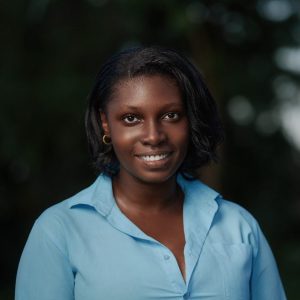-Over 2,300 digital learning boxes distributed to families
-New channels will complement Guyana’s digital school, says President Ali
AS sectors like infrastructure, health, and security continue to grow, the Government of Guyana is also prioritising the nation’s future with the launch of six new digital channels on the Guyana Learning Channel (GLC).
Unveiled at the Leonora Track and Field Centre, West Coast Demerara, on Saturday, these new channels represent more than just additional programmes; they mark a historic milestone in the development of a digitally enhanced education system designed to benefit all Guyanese.
The initiative, designed to provide equal access to high-quality educational content, saw some 2,350 boxes being distributed to families with children in Region Three (Essequibo Islands-West Demerara). The six new channels will cater for early learners, teens, and even lifelong learners, with channels GLC Elementary, GLC Elevate, GLC Discover, GLC Plus, GLC Teen ED and GLC Junior.
This move is also historic, as the GLC has become the first Caribbean channel to adopt the ATSC standard, setting a new benchmark for educational television in the region. The boxes that were distributed act as a bridge between regular TV and ATSC-compliant standards, converting the digital signal into one that could be recognised by any television.
Speaking at the launch, President Dr. Irfaan Ali commended the Ministry of Education for its efforts in enhancing the digital platform, which he described as a critical tool for accessibility, innovation, and inclusivity in education.
“I want to congratulate the Ministry of Education on further improving the digital platform, through which accessibility to education, through which innovative approach to learning, and through which a dynamic learning environment is created to enhance learning, enhance capability, and importantly, to give a more even access to high-quality education across the country,” the President said.
These new channels will go hand-in-hand with Guyana’s digital school. As President Ali explained, the digital school will function similarly to a traditional school, but in an interactive Online format. Outlining the development of the project, he said, “The digital school will be an interactive school. It will be just like a normal school, but on a digital platform.”
The Head of State further said, “We will have buildings to house the school. We have already identified one building in Region Six, one in Essequibo, and definitely, we’ll have one here in Region Three, where students will be attending the digital school. But the school will be accessible to every single child across the country.”
The digital education push will also incorporate a 360-degree assessment system, leveraging artificial intelligence (AI) to monitor and evaluate teacher performance, student engagement, and the overall effectiveness of teaching in Guyana.
“The other areas that the ministry would have to focus on is assessment, 360-degree assessment digitally, where students can assess teachers’ performance. Teachers can assess their peers’ performance, they can assess their principal’s performance on a digital platform that goes into an AI program that [will] tell us where our best teachers are, where our weaknesses are, and where we should concentrate resources on in addressing those weaknesses,” the President outlined.

ADDRESSING TEACHING GAPS
One of the key benefits of the digital learning initiative is its ability to address teaching gaps and improve accountability within the education system. President Ali highlighted that even with highly-qualified teachers, issues such as absenteeism are hurdles for the education sector. The introduction of digital education tools will help bridge these gaps, and ensure consistent access to quality teaching materials, regardless of location.
“We have great teachers; excellent teachers, but you still hear and go to some schools that teachers may not turn up for a particular period, high levels of absenteeism. So, those are things that we have to address. But whilst we address it, these tools now give us the opportunity not to be without teaching material, and not to have learning gaps.
Also speaking at the event, Minister of Education Priya Manickchand echoed the President’s sentiments, emphasising the importance of equitable education access. She highlighted the origin of the Learning Channel in 2011 under then-President Bharrat Jagdeo’s leadership, noting that the initiative was designed to ensure that students, regardless of their location or financial status, could access quality education.
Furthermore, the initiative builds on Guyana’s past success in maintaining access to education during the COVID-19 pandemic, when Guyana was one of the few countries in the region that could have maintained learning through the Guyana Learning Channel.
Minister Manickchand also criticised the previous administration for shifting the channel’s focus away from education, stating that under the APNU-AFC government, political content replaced educational material.
“When I came into office in 2020, I was really disappointed to see that Guyana, the only country in the Caribbean with a television channel dedicated to teaching and learning, had done nothing on that channel to disseminate information; had done nothing on that channel to teach our babies, had done nothing on that channel to prepare us for exams,” she said.
Since 2020, the Ministry of Education has been working to restore and expand the channel’s educational content, ensuring that students from nursery to secondary have access to a full curriculum. The new six-channel expansion will further enhance the delivery of education, with dedicated channels for various levels and subjects.





.jpg)








